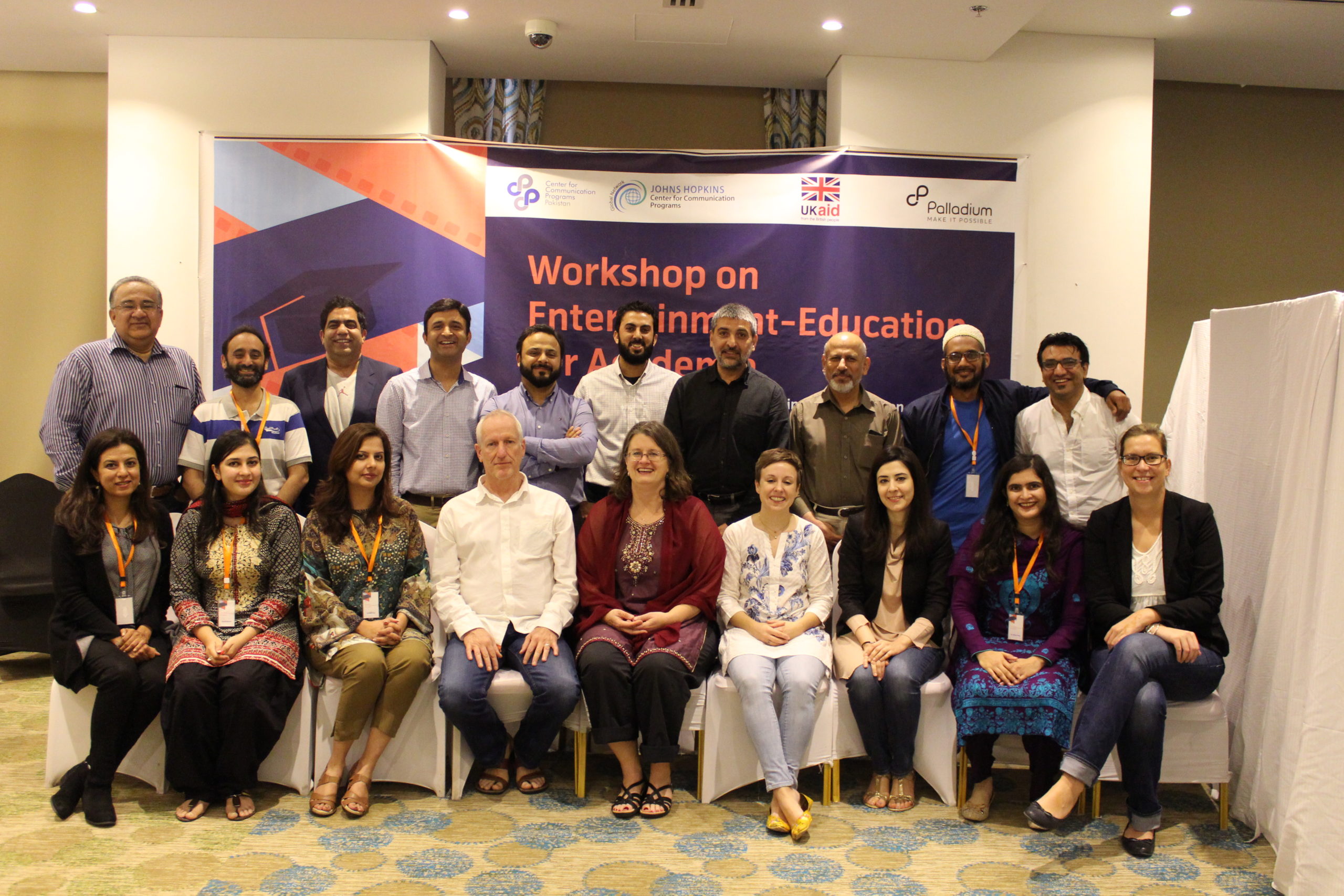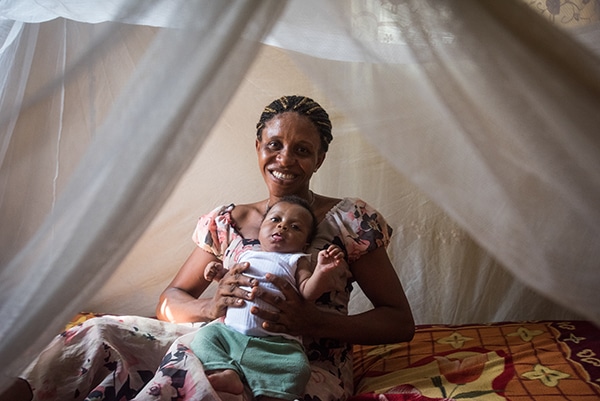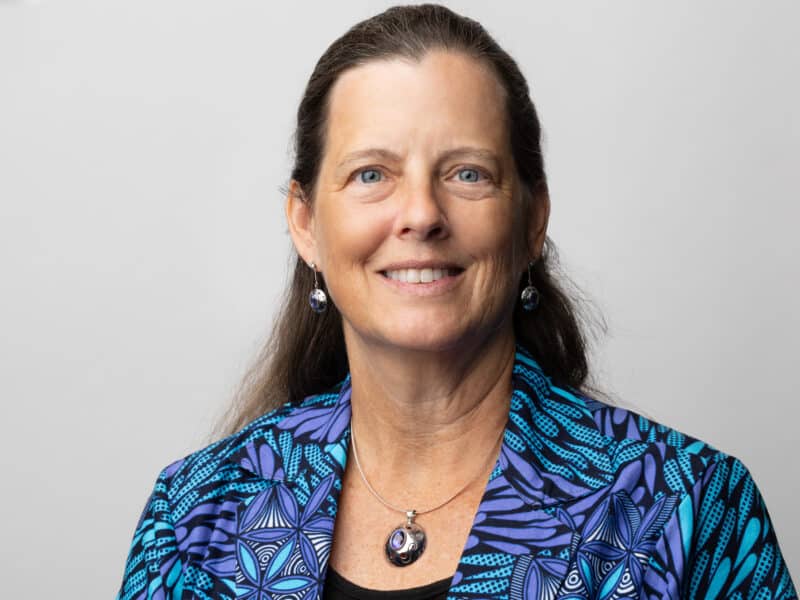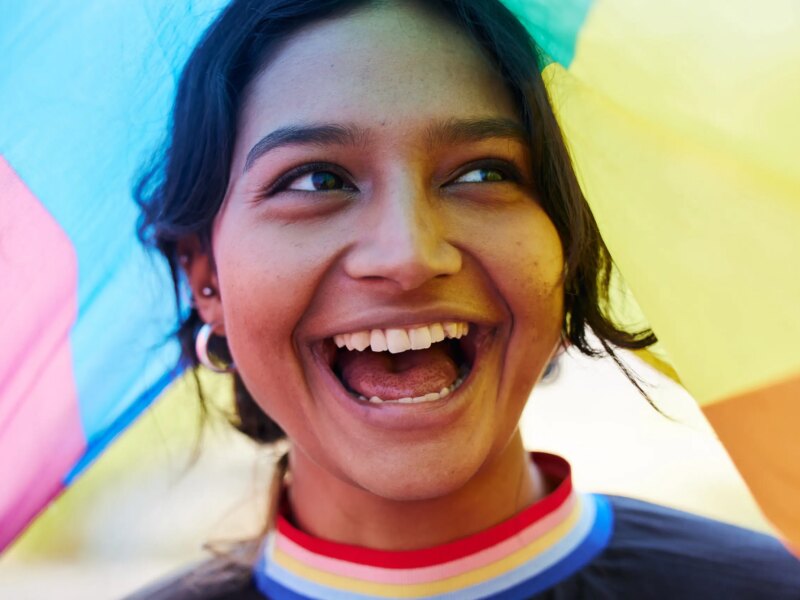It’s not often that I have the opportunity to do something that has never been done before.
But I got that chance earlier this month when I was asked to assist in the development of Pakistan’s first college course on Entertainment Education (EE) for Social and Behavior Change. Together with EE professionals from CCP sister organization Center for Communication Programs Pakistan (CCPP) and creative consultant Andrew Whaley, I led a workshop for representatives of eight Pakistani colleges and universities. By the end of the week, our group had created an EE for Social and Behavior Change course that will be added to their universities’ curricula and help train the next generation of Pakistani health communicators.
EE is not a new approach to social and behavior change in Pakistan, which has one of the most robust media landscapes in all of south Asia. CCP has been working with partners to design and implement EE programs in Pakistan since 1992, beginning with the TV series “Aahat” (“An Approaching Sound”) and later with TV and movie dramas “Kaisey Kahoon” (“How Shall I Say It”), “Paiman” and “Bol”. Currently, CCP is supporting CCPP and Palladium in the production of EE materials for their Empowerment, Voice and Accountability project. These past and current EE interventions help to create an environment where people are able to discuss health issues such as family planning and maternal, newborn, and child health; ultimately facilitating positive behavior change.
With this in mind, the vision for the EE course is to introduce students aspiring to be Pakistan’s top writers, designers and producers to the underlying principles, theories and techniques that provide the knowledge necessary to best design a real EE project. The course takes a learning-by-doing approach – after becoming familiar with theoretical bases of EE, students develop their own EE program that exemplifies these basic principles. This gives students the chance to showcase their own creativity while exploring the potential use and impact of EE programs on challenging social issues like family planning, girls’ education, honor killing, men’s health, skilled birth attendance and its impact on maternal and child mortality, and youth development.
I was invited to help lead this workshop because of my academic and technical communication expertise, as well as my experience teaching EE. I’ve worked at CCP for 17 years, and for the last six, I’ve taught an EE for Behavior Change Course at Johns Hopkins Bloomberg School of Public Health, where I’ve equipped over 100 students to create their own EE programs. The workshop also brought in the creative consultant Andrew Whaley, who has written, produced and managed the creative process for countless EE programs.
The workshop was a whirlwind of a week, as CCPP, Andrew and I helped familiarize the educators with the content, provided feedback on the curriculum and conceptualized how they would teach it to their own students. Only a week after the workshop, two of the universities represented at the workshop had already started offering the course to students, and workshop-trained educators had started teaching it to the first classes. It is really exciting to see how inspired and motivated the participants were by the power of EE to waste no time before sharing the concepts and techniques with their students.
This post was written by Caroline Jacoby, CCP Senior Program Officer and Associate at Johns Hopkins Bloomberg School of Public Health where she teaches a course titled, Entertainment Education for Behavior Change. Caroline has been recognized six times by students for excellence in teaching. For additional information, contact Caroline Jacoby or Center for Communication Programs Pakistan.





